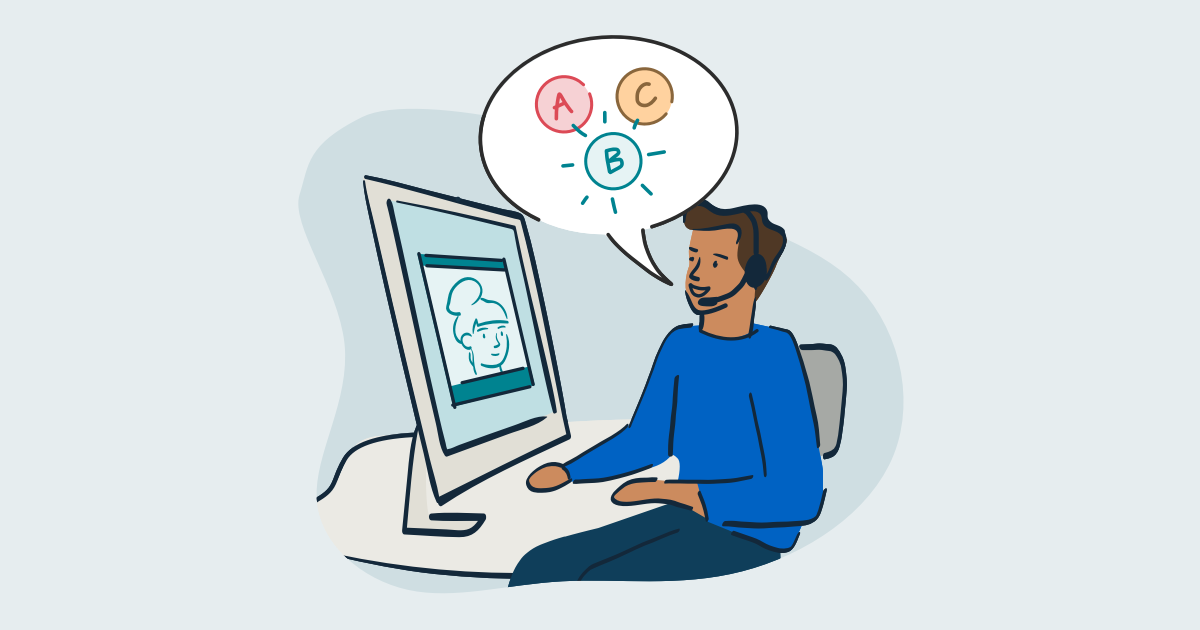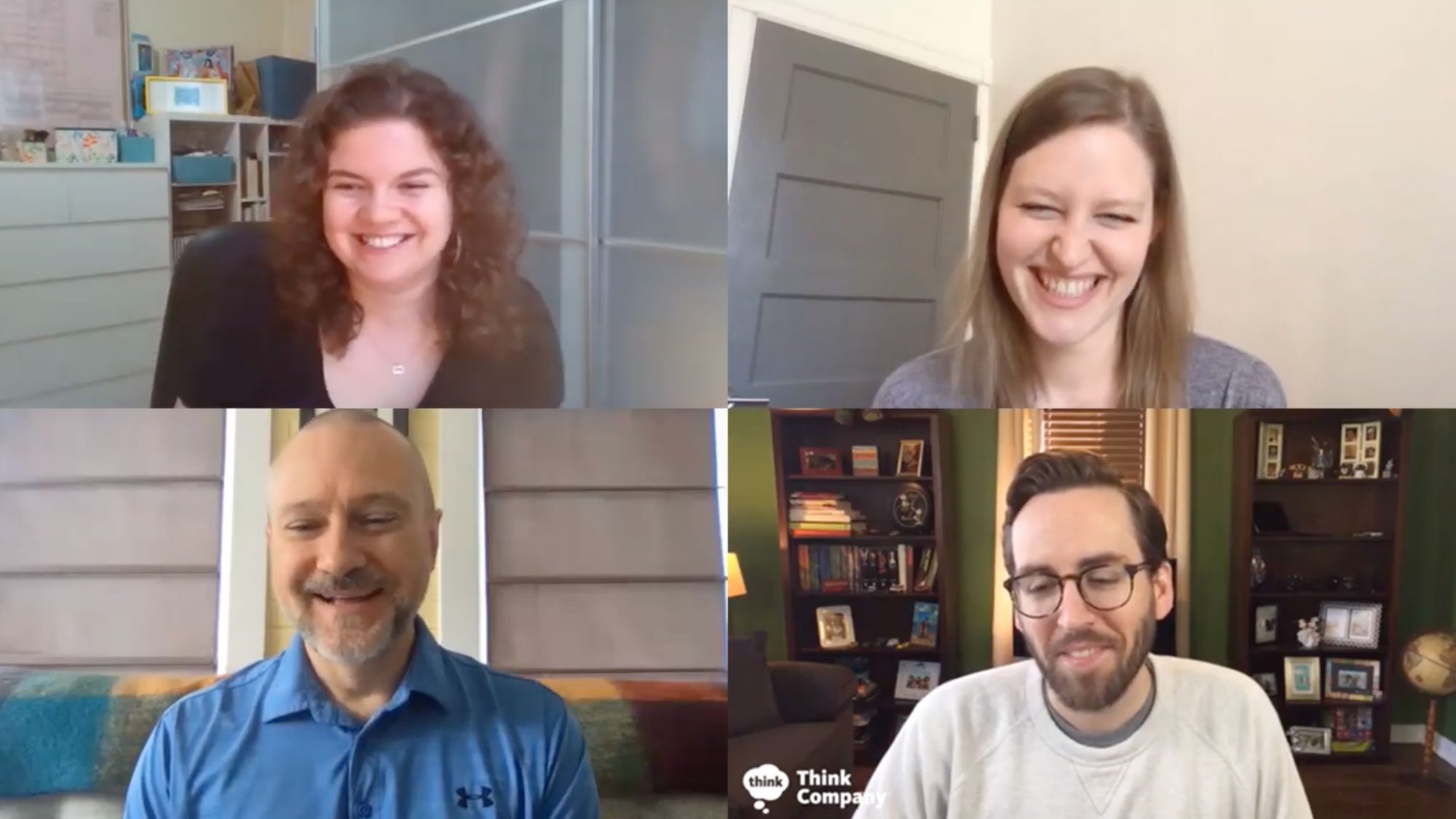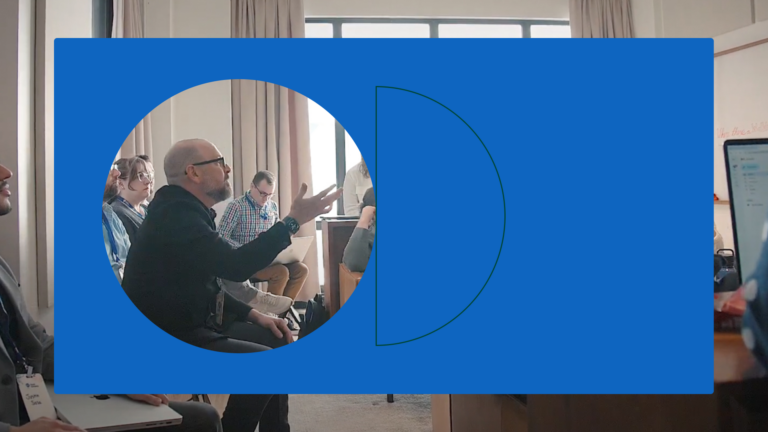Pivoting to digital in a time of crisis: A conversation with The Economy League

A few weeks ago, I had the pleasure of having a conversation with Jen Devor of the Economy League of Greater Philadelphia on the The Pivot web series, along with my colleagues Allison Drechsler (Design Lead) and Shawn Hickman (Principal, Design Systems). The video from the show remains available, but I thought I’d use this opportunity to provide a transcript for folks who might prefer the written word—while also tightening it up and providing some “overdubs” in the process, like many of my favorite live albums.
Think Company is proud to be a part of the Economy League, and I’ve actually been serving on the board for a few years now. The Economy League was founded in 1909 to address critical issues facing Greater Philadelphia by providing impactful research, connecting diverse leaders, and advancing shared solutions. Interestingly, the Economy League was here during WWI, the Great Depression, and WWII, and it’s apparent in their publications from those time periods that although they were reacting to real-time developments, they were also actively looking through those crises to the other side—anticipating resolution and planning for the aftermath. Their stance during the COVID-19 crisis is no different.

The Pivot therefore leads with the question, placed to a diverse set of individuals and organizations across Philadelphia, “What do you do when, overnight, a global pandemic plunges the organization you lead into uncertainty?”
Conversation with Jen Devor of the Economy League on “The Pivot”
Jen: Today we’re going to talk about how logistics and strategy can fall into place to create a successful pivot, especially during a time of crisis like we’re facing right now. To start, can you give us an overview of what Think Company does and your place in this conversation?
Russ: Sure! Think Company is a digital experience design company. Basically, our “job to be done” is to help our customers provide the absolute best experiences for their customers and employees. In 2020, that is almost always a mix of both digital and non-digital touch points, and although we do research, strategy and planning for holistic experiences that encompass both (Service Design), we do go deep on the design and the development of the digital systems and components of those experiences.
In the current crisis situation we’re all facing, we’re busy working with folks that perhaps weren’t previously so sure about how “digital” they wanted to go, how comfortable they felt about doing so, or even about how capable they were to do so. But right now, they don’t really have a choice. Luckily, this is exactly the kind of work we’ve been doing for a long time so while none of us saw a scenario like this coming, we were uniquely positioned to be of help.
Why Some Businesses Rethink Their Digital Strategy
Jen: Yeah, I know Think Company was doing this before the crisis and helping companies pivot for a number of different scenarios. Can you talk a little about how you’ve done that and provide some examples?
Russ: Probably the most common pivot scenario we help with has actually been pretty prevalent for at least the last 15-20 years. It typically starts with larger organizations that have traditionally succeeded by being product leaders or being operationally excellent, and enjoying that kind of reputation in the marketplace. However, customer satisfaction and experience, and also employee satisfaction and experience, has been an afterthought because they were dominant enough elsewhere to not need to place focus and resources there. But times have changed.
These organizations have started seeing people go elsewhere because they’re getting a better experience and are being treated differently (sometimes with customers even paying more for it or employees opting to make less), and are realizing that intuitive, frictionless, valuable, and even pleasant experiences can no longer be an afterthought—the market demands it.
The quick response to that has often been “well, let’s just put another system in place” or “let’s redesign the system that exists” or “let’s finally take all these systems we’ve Frankensteined together and finally get them effectively talking to each other”. Those are pieces of the fix, but the fix is bigger than that—and that’s where you start talking about pivoting. It’s a shift in the business itself to start putting customer and employee experiences front and center in all conversations and decisions. It means moving to an automatic, unquestioned standard of ensuring you have empathy for the context of a challenge, that you’re employing creativity in the generation of solutions for that challenge, and then rationality in how you validate, test, and roll out solutions.
This may not sound novel to many of us but it’s actually a very big change. Many organizations, especially long-standing ones, previously got away with just kind of bullishly pushing their way through—but the world is changing, and we’ve helped a lot of big organizations navigate this change. Pivot is a good word for this because it encapsulates operating and thinking in a new way.
Obviously right now we’re seeing a hyper focus on pivoting to being more effective when you have to operate remotely up to 100% of the time. Many folks were hesitant about this to at least some degree, and honestly that includes even us! Things that we wouldn’t have done digitally in the past, we’ve had to figure out how to be effective using the medium because there’s no other choice other than just sitting on your hands—and that’s not an option.
Deciding on a Strategy
Jen: Right, so there’s pressure coming from many directions that change has to be made. There’s thinking ahead to the user experience, which seems like there’s so many steps just to get there, and then of course there’s the technology itself and all of the logistics. I feel overwhelmed just explaining that scenario; I can’t imagine being in the middle of it. What would you say is the first thing that people really need to understand or consider as they realize they have to come up with a strategy?
Russ: Luckily we don’t hear people saying this that much anymore, but once in a while we still hear that phrase, “if we build it they will come”. That is not inherently true anymore, if it ever was. So I think the first thing that people have to realize is that you have got to get perspective outside of your own bias and ego because as humans we apply those to every decision that we make. Your personal insight, experience, and creativity are all important and are inputs to the solution(s) but need to be tempered by research. It is imperative to, as objectively as possible, understand all of the archetypes in your ecosystem—all of the variations of customer, employee, supplier, support, etc. They all have unique wants, needs, pain points, and workflows—and the more that you can satisfy, the more successful you’ll be.
You know, we tend to idolize people and organizations who have a vision and then dictate the path forward because they’re so convinced they’re right. Has that worked in the past? Yes. But in practice, there’s a reason why those kinds of success stories are called unicorns. Most folks don’t have the stomach to roll the dice on a hunch when the odds of success are low. I’m all about stacking the odds when I can—and doing what is needed to be objectively informed is what does that.
Shawn: Yeah, before you could build it and people would come, theoretically at least. But today there are just so many options out there, and if people don’t find what fits what they’re looking for exactly, they can just go find something else—and importantly, they won’t hesitate to do so. Another thing to watch out for is that a lot of people we work with come with a solution before even really understanding what the problem is. One of the strongest aspects of “jobs to be done” is stepping away from the solution until you actually understand the problem—and defining what actually constitutes success. It is absolutely OK to say “I don’t understand this enough yet to even know what the solution is.” That’s a great place of awareness to start from.
At a high level it’s simply about truly understanding what your customers are trying to achieve by engaging with your product or service. The “jobs to be done” mentality really got its start on the marketing side of the house—“why did someone buy this product and what job were they hiring it for?” The classic story is the one about milkshakes, but the idea is that someone doesn’t typically buy a drill because they love that drill—they want the hole in the wall, and the drill is the path of least resistance to get it. If something else came along that did that better than a drill, drill manufacturers would be in trouble.
Allison: Another big part of pivoting is taking that framework of jobs to be done and really putting yourself in the shoes of someone actually doing that task. That kind of contextual research and inquiry helps further hone and define what the new priorities should be in a pivot. It also helps a lot with that empathy piece.
Need help with your digital pivot?
Reach out to talk through your organization’s digital strategy needs.
Setting and Adapting Goals
Jen: Pivoting results in so much shift and so much change, sometimes it can be a complete 180 for parts of your organization. How important is it to stick to your original goals when you’re considering a shift in plans? Because sometimes it can feel like you have to throw everything out the window, but that may not always be the case.
Russ: Well, I think it depends on what your goals are. There’s also a difference between goals and core values. I think core values are things that you put in place because they shouldn’t be up for discussion or question; they answer the question of why you exist and what you’re trying to achieve in a way that lives above the products and services—so obviously, those never get thrown out the window.
I know it’s easier for us to say as a services company, but at the end of the day we care about helping people provide the best possible experiences for their customers and employees. That’s our job to be done. But we don’t really care how we do that. Over the years, our tools, tactics and processes have changed as new information has come to light but our core values haven’t. Sure, in a product company you have the added pressure of items on the shelf you’re trying to sell—but similarly, successful product companies change and evolve over time along a certain continuum, based on new information. If you’re focusing on the ultimate job to be done, you get less precious about the widget or the “thing” itself.
Pivoting While Remote
Jen: So, we’ve talked about the “what”—the need to change, shift, and pivot. Let’s talk a little bit about the “how”. How do you effectively strategize when people are remote and virtual? What are some tips when it comes to the logistics and technical aspects?
Shawn: Well, it sounds a little silly to say but honestly the biggest thing is to—whether it’s a small gathering or one of the sessions Allison and I did recently with up to 40 people—take the time to really put some thought into it and plan it out.
We always do this kind of thing when working with clients, like when we have recurring check-ins that are an hour in length, we want that hour to be as productive as possible and be the best experience possible for everyone. So we put a lot of thought into what that hour is going to look like. Right now we have the added variable that we can’t be in person, but the fundamentals aren’t really any different—even if the meeting is 4 or 8 hours.
Allison: Exactly. The fundamentals don’t change, but obviously logistics is an even bigger part of this right now. You also have to really consider the social and emotional parts of the experience right now in ways that are much different than when you’re meeting in person. In person, you can easily sense how the room is feeling and kind of “work the room” in those larger meetings. Remotely, you have to work harder and differently to get that same sense of how things are going. It goes beyond the agenda and number of attendees, it’s about planning how to determine whether or not people are comfortable, and tactics for establishing and maintaining that comfort.
Many people are overwhelmed right now with the amount of video conferences they’re attending, and it’s good to be aware of that. Especially for long meetings, a good idea is to send an email ahead of time outlining the rules of engagement—times when it’ll be expected to have your camera on and off; times when breaks are acceptable. It’s also good to really be aware of facial expressions and bringing people into the conversation who perhaps haven’t spoken yet (or in a while) by actively engaging them. While these are core elements to running a meeting anyway, there’s a new level of finesse and attention to it online.
Jen: How about some fun things to do to keep the energy and engagement up?
Shawn: Yeah, it’s funny, remote tools are hyper-efficient which is good, but you lose things like when in person there’s a little bit of mingling that happens at the start of a meeting when folks are assembling. We’ve done things like have a fun video playing as people arrive, like penguins playing at the zoo or something—that immediately gives people something light and off-topic to talk about and react to. It’s a nice way to set a tone and get a little break from the back-to-back meetings that jump right in
Final Tips and Best Practices
Jen: Any final words, tips or advice for those that are hoping to incorporate some of these ideas and tactics into their own pivot?
Shawn: A lot of videoconferencing tools like Zoom have the concept of breakout rooms, and with large groups you can have these multiple smaller sessions that tend to drive more conversation and collaboration. It’s a nice tactic to have folks break out and work on something and then pull everyone back to the main session to debrief. But it’s really difficult for one person to facilitate the conversation and also manage all the breakout rooms. So we’ve had certain people who are assigned different tasks like managing breakouts, watching time, overall facilitation, etc. It really helps relieve the mental load of managing it all, which can be really chaotic when you’re trying to run a group session for 20-plus people.
Allison: Also the collaboration element in our work is super important. So something to think about as you’re pivoting into this new way of working is that there’s nothing wrong with scheduling a pretty open-ended meeting just to collaborate in real time, or even just to have face time in a non-work context to help with team bonding and morale—that’s proven successful for our teams here, because there’s a lot going on and things are pretty stressful, let’s be honest. Having designated additional time to break out of that and be reminded of the closeness that we have at our company has really been important. Some people have been doing “walking meetings” where they all get on Zoom and just walk outside and have a check-in that way just to get out of the house.
Jen: Thank you all so much. If somebody wanted to reach out and use your design services what would be the best way for them to contact you?
Russ: The easiest way to get in touch with us is an email to info@thinkcompany.com; that inbox is regularly monitored so responses are quick. On our website are plenty of other contact options, too, and if anybody is interested in what we do we’d of course love to talk with you about it.



